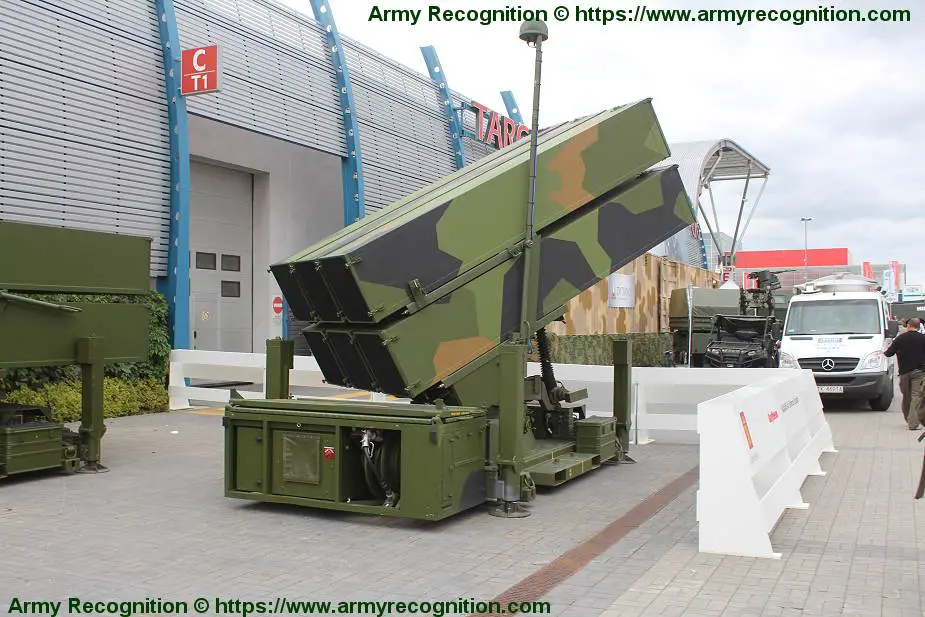According to information released by the Stars and Stripe website on August 13, 2020, Hungary has signed a deal with the United States to purchase NASAMS (National Advanced Surface to Air Missile System) air defense missile systems for around 1$ billion. The agreement was signed by Hungarian Defense Minister Tibor Benko and David Cornstein, the U.S. ambassador to Hungary.
Follow Army Recognition on Google News at this link

Mobile launcher unit of NASAMS National Advanced Surface to Air Missile System. (Picture source Army Recognition)
For Hungary, it is one of the most important acquisitions of military equipment in the defense spending of the contract that will include air-to-air and land-to-air missiles. Since 2015, Hungary has increased its defense spending to reach $2.25 billion next year.
In August 2019, the Government of Hungary has requested the United States for the purchase of one hundred and eighty (180) AIM-120C-7 Advanced Medium-Range Air-to-Air Missiles (AMRAAM), and four (4) spare AIM-120C-7 AMRAAM guidance sections. Also included are four (4) spare AIM-120C-7 control sections, six (6) AMRAAM training missiles (CATM-120C), missile containers, classified software (for the AN/MPQ-64F1 Sentinel Radar
In May 2020, the U.S. Defense Security Cooperation Agence has announced a possible Foreign Military Sale to Hungary of sixty (60) AIM-120C-7/C-8 AMRAAMER missiles, and two (2) spare AIM-120C-7/C-8 AMRAAM-ER guidance sections and related equipment for an estimated cost of $230 million.
The AMRAAM is a radar-guided, air-to-air missile with capability in both the beyond visual-range and within visual range arenas. A single-launch aircraft can engage multiple targets with multiple missiles simultaneously when using AMRAAM. The latest fielded version, the AIM-120C7, incorporated an upgraded antenna, receiver, signal processor, and new software algorithms to counter new threats. The use of smaller system components created room for future growth.
The surface-to-air version of the AMRAAM is the missile used by the NASAMS, short-range air defense missile jointly developed by the Norwegian company Kongsberg and the American company Raytheon. NASAMS has since the introduction in Norway been on a path of continuous evolution. The current NASAMS customer base consists of eleven countries, including five NATO and/or EU members.
The NASAMS employs the Raytheon AMRAAM as the basic missile, identical to the AMRAAMs used on fighter aircraft. The dual-use concept has operational advantages and reduces logistics costs.














